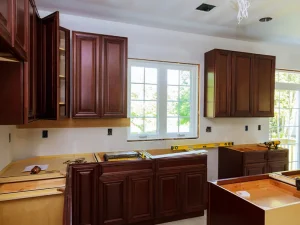Boise Metal Fabrication plays a critical role in a wide range of industries, from construction and manufacturing to automotive and custom engineering. The process involves transforming raw metal materials into functional and aesthetically precise components through cutting, bending, welding, and assembling.
Professional metal fabrication services offer expertise, advanced equipment, and technical know-how that ensure high-quality results, whether for industrial projects, commercial applications, or custom residential solutions. Utilizing skilled fabrication techniques allows property owners, engineers, and businesses to achieve durable, reliable, and precision-engineered metal products that meet their specific needs.

One of the primary benefits of professional metal fabrication is precision. Skilled fabricators use state-of-the-art machinery such as laser cutters, CNC machines, press brakes, and welding equipment to create components with exact measurements and tolerances. Precision is especially critical in projects where components must fit together seamlessly, such as structural frameworks, industrial machinery, or architectural installations. Errors in fabrication can lead to misaligned parts, structural weaknesses, or project delays. By relying on professional metal fabrication services, businesses and individuals ensure that every piece is manufactured accurately, meeting both functional requirements and industry standards.
Material selection is another essential aspect of metal fabrication. The properties of metal—such as strength, corrosion resistance, and flexibility—vary based on the type of material used. Common materials include stainless steel, aluminum, carbon steel, copper, and brass. Each material offers distinct advantages: stainless steel provides durability and corrosion resistance; aluminum is lightweight and ideal for structural or decorative applications; carbon steel offers high strength and versatility; and copper or brass may be chosen for aesthetic or conductive purposes. Professional metal fabricators guide clients in selecting the appropriate materials based on the project’s purpose, environmental exposure, and budget considerations, ensuring longevity and performance.
Metal fabrication services encompass a wide variety of processes tailored to different applications. These processes include cutting, bending, welding, punching, stamping, and finishing. Cutting can be achieved through techniques such as laser cutting, plasma cutting, or waterjet cutting, each offering varying levels of precision and suitability for different metal types. Bending and forming allow metal to be shaped into custom angles and structures, while welding and assembly techniques join pieces into functional units. Finishing services, such as powder coating, painting, or galvanizing, protect surfaces from corrosion and enhance aesthetics. By combining these techniques, professional metal fabrication services deliver custom solutions that are both practical and visually appealing.
Two key advantages of utilizing professional metal fabrication services include:
- Custom Solutions: Fabricators can create components or structures tailored to specific project requirements, ensuring that each piece meets exact design specifications and functional needs.
- Quality and Durability: Professional fabrication techniques, coupled with high-grade materials, result in products that withstand demanding environments, heavy use, and long-term wear, minimizing the need for repairs or replacements.
Industries such as construction, automotive, manufacturing, and commercial design rely heavily on metal fabrication for the creation of essential components. In construction, fabricated metal is used for structural supports, staircases, handrails, gates, and decorative elements. In automotive and transportation, custom metal parts ensure vehicle performance, safety, and durability. Manufacturing industries depend on precise fabricated components for machinery, equipment housings, and conveyor systems. By leveraging professional fabrication services, companies in these sectors gain access to tailored solutions that enhance efficiency, safety, and overall project quality.
Metal fabrication is also a key component of architectural and custom design projects. Designers and property owners increasingly use metal to create striking visual elements, including decorative railings, gates, furniture, and outdoor structures. Professional fabricators can interpret complex design concepts, translating them into functional metalwork that complements the intended aesthetic. Advanced techniques, such as laser cutting and CNC bending, allow for intricate patterns, precise shapes, and unique designs that are difficult to achieve with manual methods. This combination of craftsmanship and technology ensures that fabricated metal components meet both design and structural requirements.
Safety and compliance are critical in metal fabrication projects. Improper fabrication can lead to structural failures, safety hazards, or noncompliance with industry regulations. Professional fabricators adhere to strict safety standards, material specifications, and quality control processes, ensuring that each product is reliable and fit for purpose. Inspections and testing protocols, such as load-bearing assessments or weld inspections, further guarantee the integrity and safety of fabricated components. By working with experienced fabricators, clients mitigate risks and ensure that the final product meets both safety and performance expectations.
Maintenance and long-term performance are additional benefits of professional metal fabrication. Fabricated metal components are designed to endure harsh conditions, but proper maintenance extends their lifespan. Protective coatings, regular inspections, and timely repairs prevent corrosion, fatigue, or surface damage. Professional fabricators often provide recommendations for maintenance schedules, cleaning methods, and protective treatments, helping clients preserve the value and functionality of their metal installations. By combining high-quality fabrication with appropriate maintenance practices, businesses and property owners can maximize the return on their investment in metal components.
Cost and efficiency are important considerations when choosing metal fabrication services. Professional fabricators provide detailed estimates, outlining material costs, labor, and project timelines. Advanced equipment and streamlined processes allow for faster production and minimized material waste, translating into cost savings and more efficient project completion. While custom fabrication may seem more expensive than off-the-shelf solutions, the durability, precision, and tailored results provided by professional services often result in greater long-term value. Additionally, fabricators help clients optimize designs to balance cost, performance, and aesthetics, ensuring efficient use of resources.
Environmental responsibility is increasingly important in metal fabrication. Modern fabricators adopt sustainable practices, such as using recycled metals, minimizing waste, and applying eco-friendly surface treatments. Water-based coatings, powder coatings, and non-toxic finishes reduce environmental impact while maintaining the durability and appearance of fabricated components. Choosing a fabricator committed to sustainable practices allows clients to achieve high-quality results while supporting environmentally responsible methods.
Collaboration and communication between clients and fabricators are essential for successful projects. Experienced metal fabrication companies engage clients throughout the design and production process, providing input on material selection, fabrication techniques, and finishing options. Clear communication ensures that designs are accurately translated into finished products and that any modifications or adjustments are implemented efficiently. Collaborative relationships foster trust, reduce errors, and result in metal components that meet both functional and aesthetic requirements.
In conclusion, professional metal fabrication services offer precision, durability, and customized solutions for a wide range of industries and applications. From cutting, bending, and welding to finishing and assembly, skilled fabricators transform raw metal into reliable, functional, and visually appealing components. Material selection, safety compliance, and maintenance guidance ensure long-term performance and value. Whether for industrial, commercial, architectural, or custom residential projects, professional metal fabrication delivers high-quality results tailored to the specific needs of each client. Investing in expert fabrication services not only enhances the structural integrity and aesthetics of projects but also provides peace of mind, knowing that every component is engineered for precision, durability, and long-lasting performance.



